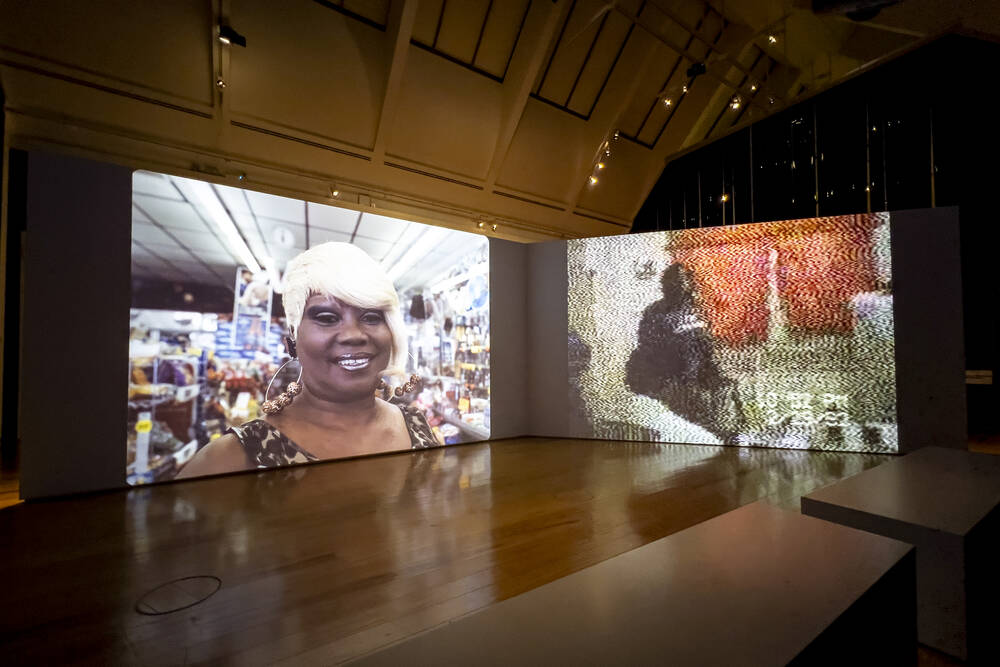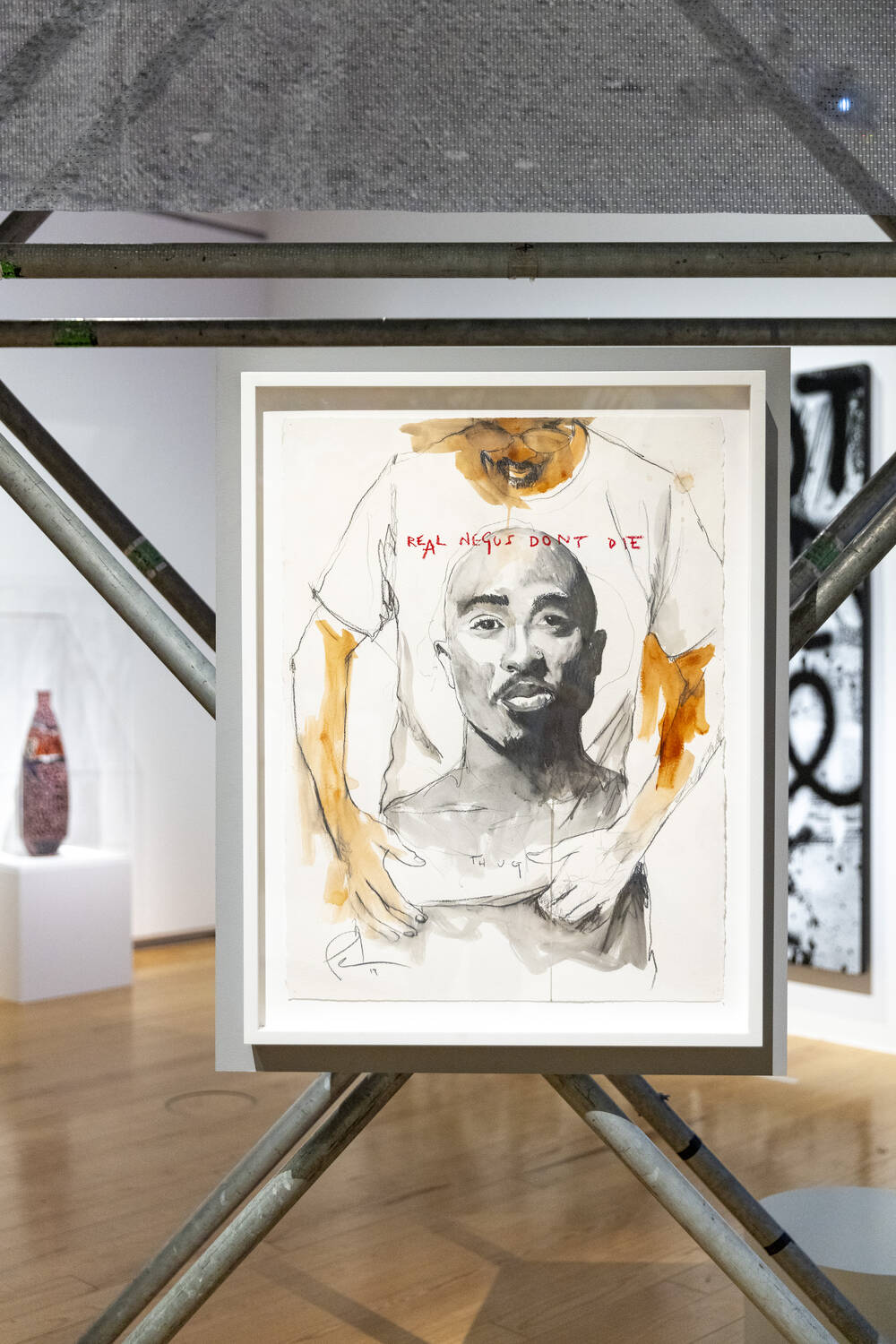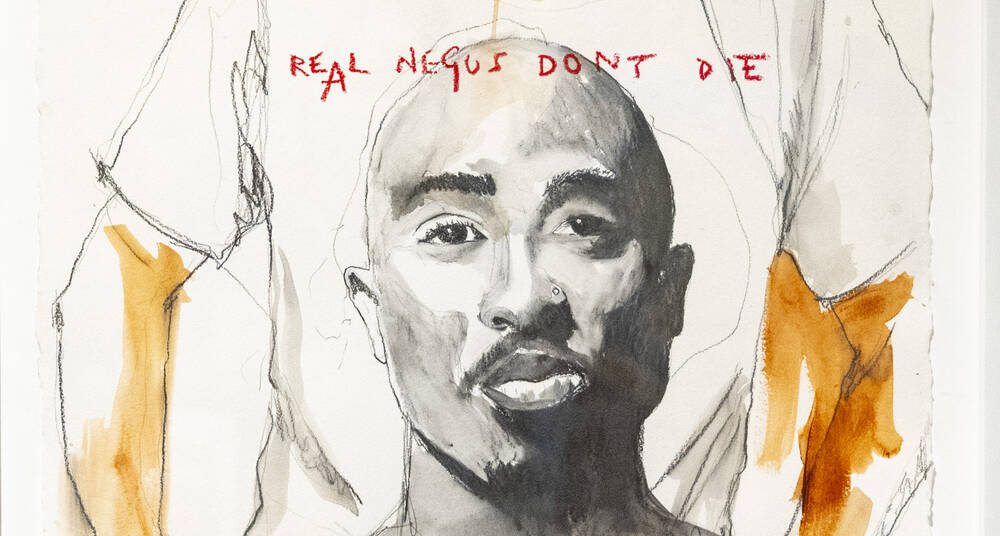Death plays a large part in Hip Hop. The tragic early passing of legends such as Biggie Smalls and Tupac, not to mention rising superstars like XXXTentacion and Pop Smoke meant the hip-hop community has had to find its own rites of mourning. A look at THE CULTURE tells us what these might be.
Hip Hop is music and yet so much more. With its own language, fashion, and aesthetics, Hip Hop melds into a unique (counter-)cultural movement and as such builds its very own understanding of life, death, and life after death. Here, the philosophy of Hip Hop seems constantly to be guided by a promise called for by US rapper Kendrick Lamar back in 2012 in “Sing About Me, I’m Dying Of Thirst”: “When the lights shut off and it’s my turn/ To settle down, my main concern/ Promise that you will sing about me.”
For Hip Hop has always been the melody that sings about life in the Black and Latinx communities of the USA, where it emerged around 50 years ago. Rappers and artists in the visual media repeatedly sing songs about everyday life in their districts of major US cities, the fast life to be lived along with all its merits and its dangers, or the deaths repeatedly caused by gang and police violence. In musical terms, these stories are then underpinned – as shown to impressive effect by Khalil Joseph’s short film “m.A.A.d.” from 2014 – by the lively hum of an exuberant block party, for example, the therapeutic sounds of hair salons, or the deafening echo of gunshots.
Life and death in Compton
In all these rushing images, Joseph depicts Compton in California, where Kendrick Lamar grew up and to which the rapper dedicated his second album “good kid, m.A.A.d city”. On it, he presents the Los Angeles suburb as an “orphanage we call a ghetto” made up of entangled community structures, limited opportunities, and tragic dark sides. Yet while Lamar’s album allows us to follow the heroic journey of its protagonist, Joseph takes it as inspiration to give Lamar’s “mad” hometown a voice of its own
Thus “m.A.A.d” becomes an ode to all the life patrolling the streets of Compton with its heavily tattooed muscle men, stacked between bulging shelves in corner stores, or drying out with the kids on the hot asphalt next to the swimming pool. And part of life in Compton – as everywhere else – is death, which here peeps out of open coffins in shop windows or spreads out in the eerie silence of the morgue. Joseph lets all these impressions dance blithely around on the two screens of the video work, and composes life and death as different movements of one and the same symphony. Or different bars played to the same beat.
Death has a special significance in Hip Hop – not least because even today structural inequality, poverty, and racism mean that young Black people are eleven times more likely to die due to gun violence than their white compatriots. Hip Hop legends like Biggie Smalls and Tupac, or rising superstars like XXXTentacion and Pop Smoke, are only the most famous names for whom the Hip Hop scene has had to find its very own rites of mourning. Mourning, in Hip Hop, means erecting monuments to its dead, honoring their names, and keeping them alive through remembrance.

While in rap, for example, every shoutout erects a kind of spoken-word memorial, the artist, poet, and activist Roberto Lugo created “Street Shrine 1: A Notorious Story” in 2019, erecting a 1.37-meter-high ceramic monument. Borrowing from traditional forms of Chinese pottery and Western burial urns, the larger-than-life vessel bears a portrait of Biggie Smalls, aka the Notorious B.I.G. The simple black and white portrait of the rapper is surrounded by a colorful mix of ornamentation inspired by classical antiquity, East Asian porcelain painting, the luxury label Versace, and the Coogi sweaters the B.I.G. made famous.
Lament and hymn
Lugo thus remixes traditional craftsmanship and design history with graffiti, pop culture, and rap music to create a new sound that builds a bridge between the youth culture in American suburbs like Compton and the museum visitors at established art institutions who often seem so far removed from it. In “Street Shrine 1” the artist, who hails from Philadelphia, aims to confront this broad audience with death and with the “culture of gun violence” in which he likewise grew up. The work is both a memorial and a monument at the same time – a lament and a hymn – since, beyond contemporary observation, Lugo’s “Street Shrine” aims to record for posterity those very stories, experiences, and heroes of Black and Brown communities that mainstream historiography all too often forgets. “Ceramics last thousands of years,” explains the artist in an interview with AD. “Someday these pieces could tell the history of my community.” Lugo’s porcelain shrine thus elevates Biggie Smalls and the culture that produced him and still celebrates him today to the status of something worthy of history, immortalizing them for a distant future.
This understanding of immortality through remembrance is likewise confirmed by Fahamu Pecou in “Real Negus Don’t Die: Thug.” On large-format, pristine white paper, the artist shows an unconventional self-portrait. Instead of his head, which is in fact cut off by the upper edge of the picture, the artist puts his torso at the center of the composition. The white T-shirt he is wearing thus becomes a second image space within the first image. On it, in glazed shades of gray, Pecou portrays Tupac Shakur, who looks out at us with a self-confident air and vividly flashing eyes. With this arrangement, Pecou turns himself into an instrument that plays a song of praise to the rap icon in a continuous loop and thus functions as a “walking memorial”.
Walking memorials and R.I.P. shirts
Pecou refers with this representation to the Afro-American mourning ritual of the R.I.P. shirt, which quickly found its way into Hip Hop culture. In her essay “Fresh to Death”, Dr. Kami Fletcher describes T-shirts bearing photos of deceased loved ones as important ritualized mourning clothing with countless functions for Black American communities. An R.I.P. shirt signals to the community that its wearer is grieving and at the same time offers community members the opportunity to alleviate this grief by expressing sympathy, talking about the deceased person, and sharing memories. The T-shirts also go a little way to filling the huge void that remains after the death of a loved one, as by wearing one a person literally and figuratively fills in the deceased’s contours and wears their memory like a second skin.

The shirts are usually worn for the first time at the repast, the first meal together after the funeral service, and then again and again for posthumous birthdays or even in everyday life. In a similar way to Roberto Lugo’s “Street Shrine”, with each wearing of the shirt the bereaved assure themselves of a public memorial for those whom the dominant society rarely immortalizes with bronze statues or street names. On his mourning shirt, Pecou likewise confirms that this communal remembrance is all that’s needed to give his loved ones an afterlife, namely with the bright red lettering that adorns it: “Real Negus Don’t Die.” Negus, the Ethiopian term for kings or emperors, and the halo, which is hinted at in a tentative line behind Tupac, ultimately emphasize once again something that runs through hip-hop’s entire attitude to life: Remembering is a promise to sing about the deceased. The works by Khalil Joseph, Roberto Lugo, and Fahamu Pecou are just a few examples of how the songs produced by the Hip Hop culture, far from being sad arias, are as loud, as proud, and as much for the culture as the lives they immortalize.

THE CULTURE. HIP HOP AND CONTEMPORARY ART IN THE 21ST CENTURY
FEBRUARY 29 – MAY 26, 2024









